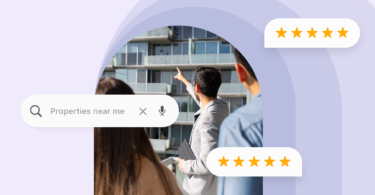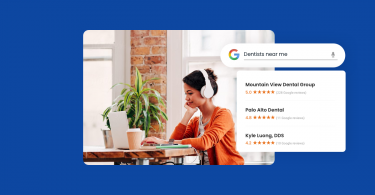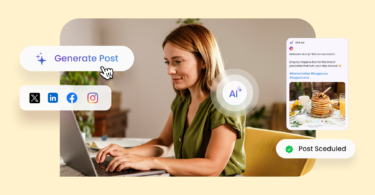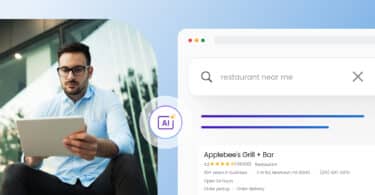Local SEO mistakes can quietly diminish your visibility, credibility, and, ultimately, revenue. How?
You might be investing in SEO, publishing fresh content, and staying active on social media, yet your phone isn’t ringing, and customers aren’t walking through your door. Sound familiar? You’re likely overlooking some critical local SEO errors. These missteps are common among local businesses and incredibly costly when left unaddressed.
Local SEO isn’t a checklist you complete; it’s a layered, ongoing strategy that demands precision. Even one overlooked detail like slow site speed, missing online directory listings, or poor mobile optimization can decrease your visibility and drag your rankings down.
Why? That’s because search engines prioritize relevance, consistency, and technical excellence. If your listings are inconsistent, your technical SEO is flawed, or your site doesn’t load fast enough on mobile, Google takes notice, and your business gets buried in local search results.
In this blog, we’ll explore the most damaging local SEO mistakes that lead to poor user experience and show you exactly how to fix each one.
By the end, you’ll also have a clear, actionable roadmap to elevate your local SEO performance, rank higher in search results, and attract more foot traffic, calls, and conversions from your local audience.
Table of contents
- Why local SEO is important for local businesses
- Stop losing local traffic: 12 local SEO mistakes to avoid and fix now
- How Quick Care Med fixed local SEO and skyrocketed visibility with Birdeye GenAI solutions
- Other local search engine optimization (SEO) mistakes to avoid
- How Birdeye fixes the gaps in your local SEO strategy
- FAQs on local SEO mistakes
- Final thoughts: Get proactive with your local SEO
Why local SEO is important for local businesses
Local SEO is essential for businesses that rely on serving customers within specific suburbs or service areas. It allows search engines to interpret your business’s location, offerings, and relevance accurately so you appear in front of nearby customers at the exact moment they’re searching.
As local search continues to shift toward mobile-first and voice search behavior, businesses must adapt. Searches that include phrases like “open now” or “near me” are increasing in volume and urgency, especially on mobile devices. These aren’t casual browsers; they’re ready to act.
As per Birdeye research, 83% of small business traffic comes from Google, which means your online visibility on Google can make or break your success. In fact, 76% of people who search for a nearby service visit a business within one day. This highlights how quickly local searches convert to in-person visits.
However, even minor errors can significantly impact your business. 68% of customers stop engaging with a business if they encounter incorrect information in its online listings.
With so many choices available, an inconsistency in your online presence can cost you:
1. Credibility
2. Traffic
3. Revenue
For many local businesses, the problem isn’t a lack of effort but rather a lack of clarity in their local SEO strategy.
To succeed, you need more than just basic keyword optimization, you need accurate online listings, suburb-specific target keywords, and content that resonates with both search engines and your target audience.
Precise keyword research is critical to ensure your business ranks for the search terms potential customers are actually using in your area.
If your business isn’t showing up in local searches, it’s not because people aren’t searching for your services; it’s because they’re finding your competitors instead. Building strong online visibility starts with a local SEO strategy that aligns with real-world customer behavior.
Still, think a few SEO mistakes won’t hurt your business? Think again. Below, we have listed a few local SEO mistakes that businesses should avoid at all costs.
Stop losing local traffic: 12 local SEO mistakes to avoid and fix now
From inconsistent local listings to ignoring mobile optimization, even minor oversights can quietly push your business down in local search results. Below, we’ve listed 12 critical local SEO mistakes that could be reducing your visibility, traffic, and potential customers.
1. Incomplete or missing Google Business Profile
The Google Business Profile (GBP) is your most valuable digital storefront. Yet, many businesses either don’t claim it or leave it half-filled.
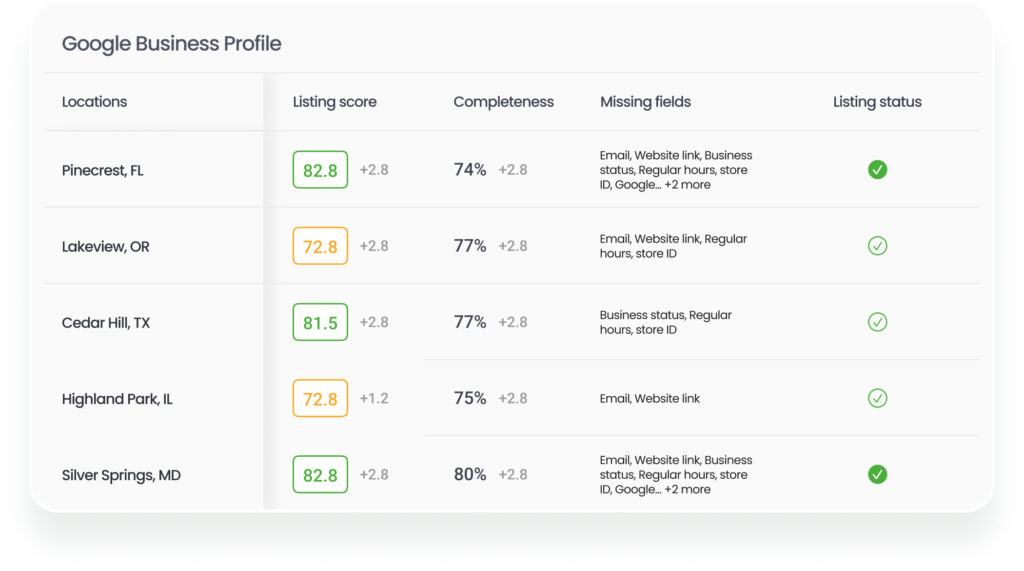
Why this affects: It confuses search engines and your customers. Without a complete profile, you’re not showing up in local search rankings or on Google Maps.
- No photos or phone number? You lose trust.
- No categories? Google doesn’t know where to rank you.
- Wrong hours or address? Customers go elsewhere.
Fix it: Fill out every field. Use relevant keywords, add high-quality photos, enable messaging, and update holiday hours. Better yet, use tools like Birdeye to manage your GBP at scale.
Birdeye automatically syncs your Google business profile and pushes correct data to 50+ high-traffic directories, including Apple, Facebook, and Bing, where most real traffic comes from. (Google: 83.10%, Facebook: 3.24%, Bing: 2.09%, DuckDuckGo: 2.64%).

As per Sammy Valenta, Senior Client Manager, CGI:
“The Birdeye system helps me get my clients reviews. This plays a big part in Local SEO which is something we work on for them. It will always be a huge factor Google looks at when ranking a business on Google. We have seen tons of success using Birdeye for this reason.”
2. Inconsistent NAP (Name, Address, Phone number) across directories
Inconsistent NAP across directories confuses search engines and fractures your local authority.
❌ One site says “Suite #5”, another says “Unit 5”
❌ One lists a landline, the other a mobile
Why this hurts: Search engines rely on consistency to verify legitimacy. Sadly, search engines don’t do the guesswork. They’ll just rank someone else. Mismatched info on Yelp, Facebook, and other relevant local directories can confuse search engines and lower your rankings.
Fix it: Use a platform like Birdeye Listings AI to automatically sync your NAP across 50+ directories, reducing the risk of errors and boosting local SEO performance.
Quick Care Med used Birdeye Listings to manage 150+ listings across platforms. Result? A unified online presence, 98.5K Google Map impressions, and a surge in patient inquiries.
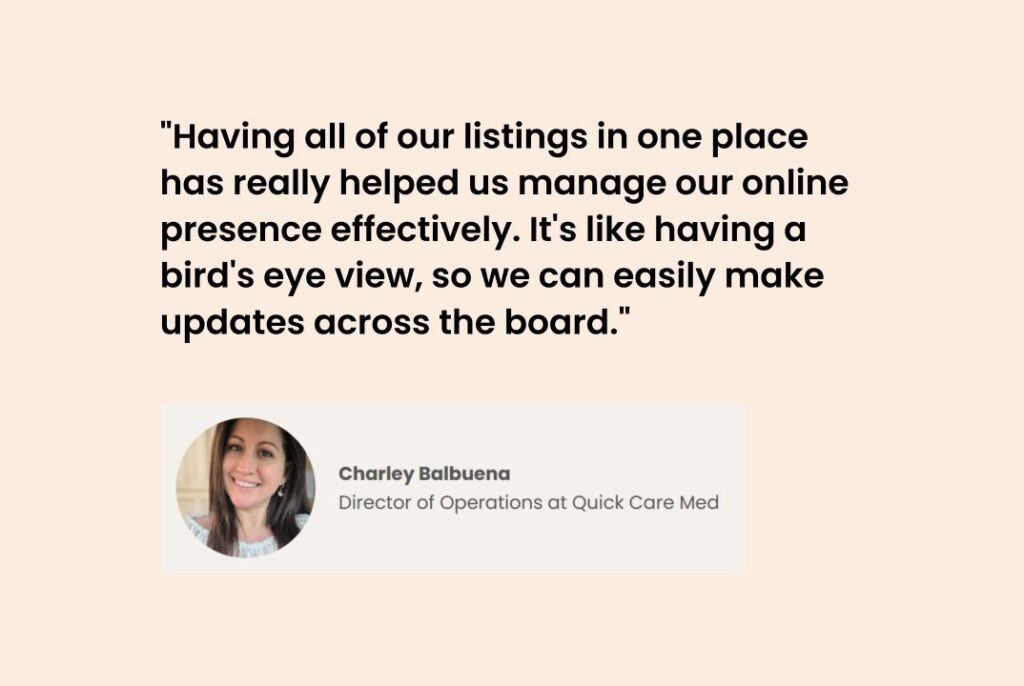
3. Ignoring online reviews (especially negative ones)
Customer feedback is gold for local SEO only if you respond to it. Moreover, if you are only prioritizing positive reviews and ignoring the negative ones, it shows both Google and your audience that you don’t care.
Why this hurts: Unattended negative reviews and a lack of engagement show Google (and customers) you’re not trustworthy. Search engines weigh reviews in local rankings.
Poor or no reviews = no trust
No responses = no engagement
Negative sentiment = lower local rankings
Fix it: Encourage satisfied customers to leave reviews. Respond to all reviews, positive or negative feedback promptly. Use Birdeye Reviews AI to automate replies and stay on top of feedback across locations.
Pro insight: Quick Care Med collected over 15.3K reviews with a 4.6-star rating using Birdeye’s automated system integrated with their EMR.

4. No keyword localization
Stuffing generic keywords like “personal injury lawyer,” “best plumber near me,” or “dentist in my area” won’t help your local SEO strategy. It’s essential to be specific. Focus on location-specific keywords, service-based terms, and hyperlocal search phrases that match the intent of nearby customers.
Why this hurts: You’re competing nationally. Without local keywords like “personal injury lawyer in San Diego,” you’ll miss out on high-intent local traffic.
Fix it: Add service-specific keywords with your location in meta descriptions, headers, and your website content. For example, you can go ahead with:
Location-specific keywords:
- “Plumber in Brooklyn”
- “Dentist in Los Angeles”
- “Real estate agents in Chicago”
- “Hair salon in Manhattan”
- “Electrician in San Francisco”
Service-based terms:
- “24/7 emergency plumbing services”
- “Best dentist for kids in Dallas”
- “Affordable home cleaning services near me”
- “Wedding photographer in Austin”
- “Mobile phone repair in Seattle”
Hyperlocal search phrases:
- “Best pizza near Times Square”
- “Car wash in downtown Phoenix open now”
- “Yoga classes in Santa Monica”
- “Coffee shop near Grand Central Station”
- “Roofing contractor in South Bay, Los Angeles”
Also, you can use a local rank tracker to see how you rank by region.
Small mistakes. Big impact on local SEO.
Want to see the impact of Birdeye on your business? Watch the Free Demo Now.
5. Missing local backlinks and directory citations
Local SEO isn’t just about your website and Google profile optimization. Search engines rely on trust signals, which include links and citations from trusted local sites.
Common mistakes to avoid in local SEO:
- No local backlinks from community blogs or news
- Ignoring industry-specific directories
- Not listed on the chamber of commerce sites
💡 Pro tip: Get listed in relevant local directories, sponsor local events, and cross-link with partners. Birdeye Competitors AI even shows where your rivals are getting good reviews and links, so you can reverse-engineer their wins.
6. Poor website experience (slow, unoptimized, not mobile-friendly)
A clunky, slow-loading, poor-quality website content doesn’t just hurt user experience; it also lowers your local SEO ranking.
Common SEO mistakes:
- Not mobile-optimized
- Broken links and redirects
- Uncompressed images
- Duplicate content
- Insecure (HTTP) pages
Fix it: Use Google Search Console and Birdeye’s integrated site monitoring to flag issues. Then, optimize the mobile experience, especially because most local searches now happen on mobile.
7. Not optimizing for multiple locations
If your business operates across multiple cities or regions, relying on a single landing page for all locations won’t be effective.
Why this is a problem: A generic landing page will limit your ability to rank in local search results for specific locations, reducing your local visibility and missing out on potential customers searching for businesses in their area.
How to fix it: Create location-specific landing pages tailored to each city or region you serve. These pages should feature unique content, local keywords, and NAP details for each location. Including maps and specific business information will enhance the credibility of these pages.
Additionally, use tools like Birdeye Listings AI to effectively manage each location’s presence and maintain consistency across your social media presence and website content.
8. Ignoring voice search optimization
Voice search is becoming an increasingly popular way for consumers to find local businesses while on the go. Your website must be well-optimized for these conversational queries to attract more local customers.
Why this hurts: Voice search queries are more conversational and natural, unlike traditional keyword-based searches. If your site isn’t structured to match how search engines understand these types of questions, you risk being invisible to those using voice search.
This could lead to missed opportunities, especially if your poor technical SEO doesn’t support voice search optimization.
Fix it: Start by adding FAQs in natural language that mirror the types of voice queries users might ask, such as “Where can I find a dentist open now in Austin?” Targeting long-tail keywords like these helps your content rank for many local searches.
Also, implementing local structured data markup and schema markup ensures your site is better understood by search engines, improving your chances of ranking in local search results for voice queries.
9. Failing to track local SEO performance
You can’t improve what you don’t measure. As a business owner, if you’re not tracking your performance, you won’t know what’s working and what’s falling short.
Why this hurts: Without a proper local SEO audit, you’re flying blind. You’ll have no idea how your website’s search visibility is performing or how customers are engaging with your content.
Fix it: Utilize tools like Google Search Console, Google Analytics, and solutions like Birdeye Insights AI to monitor key metrics like rankings, traffic, and customer feedback.
Use these insights to analyze your website’s title tags, spot areas for improvement, and receive AI-generated recommendations to enhance your local search visibility and overall performance.
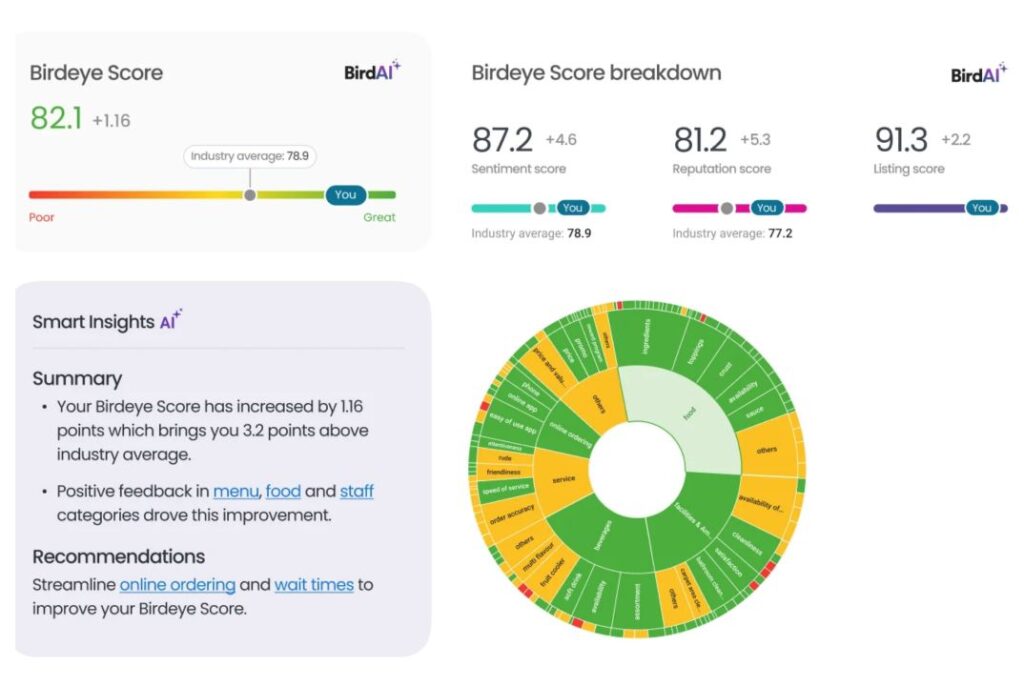
10. Not Leveraging Local Event-Based SEO
Many local businesses miss the opportunity to rank for local search results related to events or community activities. Not optimizing for events happening in your area can cause you to miss out on a huge traffic source.
Why this hurts: Local events whether it’s a local festival, charity event, or seasonal sale—often attract a lot of local searches. By not optimizing for these types of event-based keywords (e.g., “Christmas tree sales near me,” or “Dallas food festival discounts”), businesses miss a targeted audience that is searching with high intent to make a purchase or visit.
Fix it: Always create landing pages or blog posts tailored to events, sales, and local activities. Use event-specific keywords and local business listings to promote your business’s involvement. Ensure you update your Google Business Profile with event-related details and include event-specific structured data to boost visibility.
11. Minimal social media presence
Inactive social profiles can significantly harm your local online presence. Social media is not just a branding tool, Google also factors in your social activity when evaluating local trust signals, and customers increasingly use these platforms to vet businesses before making decisions.
Why this hurts: Without regular activity, your business profile can appear outdated, and search engines may question your relevance or authority in your local market.
Moreover, customers rely on your social media profiles for insights, reviews, and updates, making inactivity a missed opportunity for engagement.
Fix it: Post regularly on your social profiles, engage with your local audience, and use these platforms to share relevant keywords, customer reviews, and blog content.
Ensure you’re maintaining mobile optimization on your profiles for easy access. With solutions like Birdeye Social AI, you can manage and schedule posts across multi-location businesses at the best time, keeping your content fresh, engaging, and consistent.
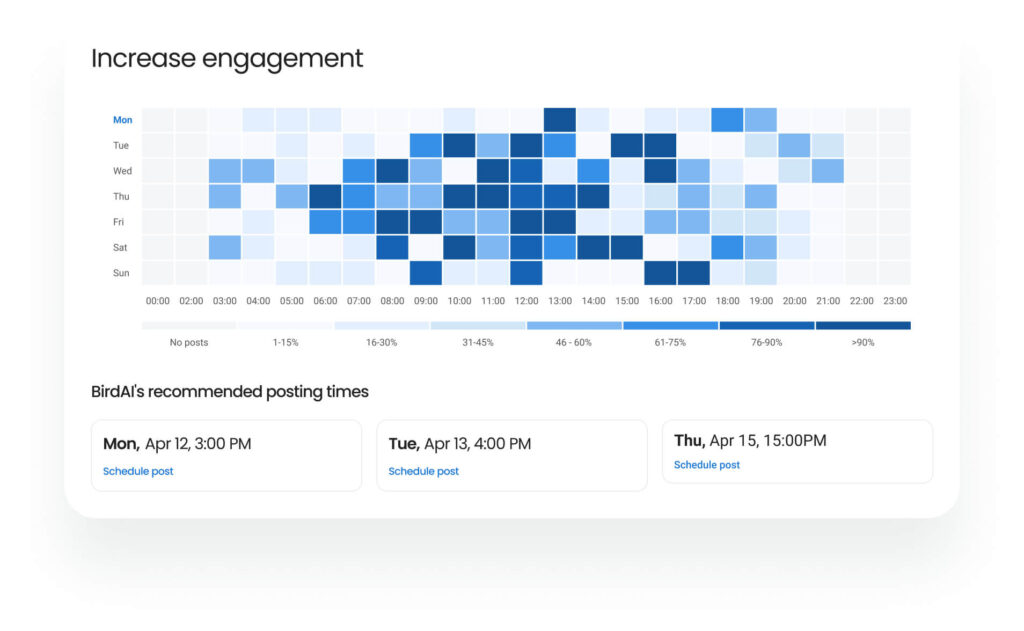
12. Neglecting the SEO Power of Customer-Generated Content (UGC)
While most businesses focus on their own content, user-generated content (UGC), such as customer photos, videos, and testimonials, is often an untapped resource that can help improve local SEO.
Why this hurts: User-generated content can provide authentic local signals, helping search engines understand the quality and relevance of your business in a local context.
Additionally, reviews and photos from customers can directly influence local rankings, but many businesses fail to encourage or optimize UGC actively.
Fix it: Encourage customers to share their experiences by posting photos, videos, or written testimonials on your website, social media, or Google Business Profile. Integrate customer feedback into your website’s SEO strategy by highlighting reviews and featuring UGC prominently on landing pages.
This helps build social proof, and Birdeye solutions can play an active role in it by helping you to streamline the process and save time.
By avoiding these common local SEO mistakes, local businesses can strengthen their position in local search results and maintain a dynamic, impactful online presence. Let’s understand how Quick Care Med gained better visibility with Birdeye solutions.
How Quick Care Med fixed local SEO and skyrocketed visibility with Birdeye GenAI solutions
Brand: Quick Care Med, a healthcare based in North Central Florida

Challenge: Inconsistent business online listings, fragmented review strategy, and no real-time communication.
Solution: Birdeye Listings + Reviews + Webchat.
The Result:
- Centralized 150+ business listings
- Gained 98.5K Google Maps impressions
- 94.7K clicks on “Call” button
- Collected 15.3K reviews (avg. 4.6 stars)
- Added Birdeye Webchat, reducing phone volume and increasing direct patient requests
They didn’t just boost visibility. They became a go-to clinic in their region and even saw a spike in job applications thanks to their online reputation.
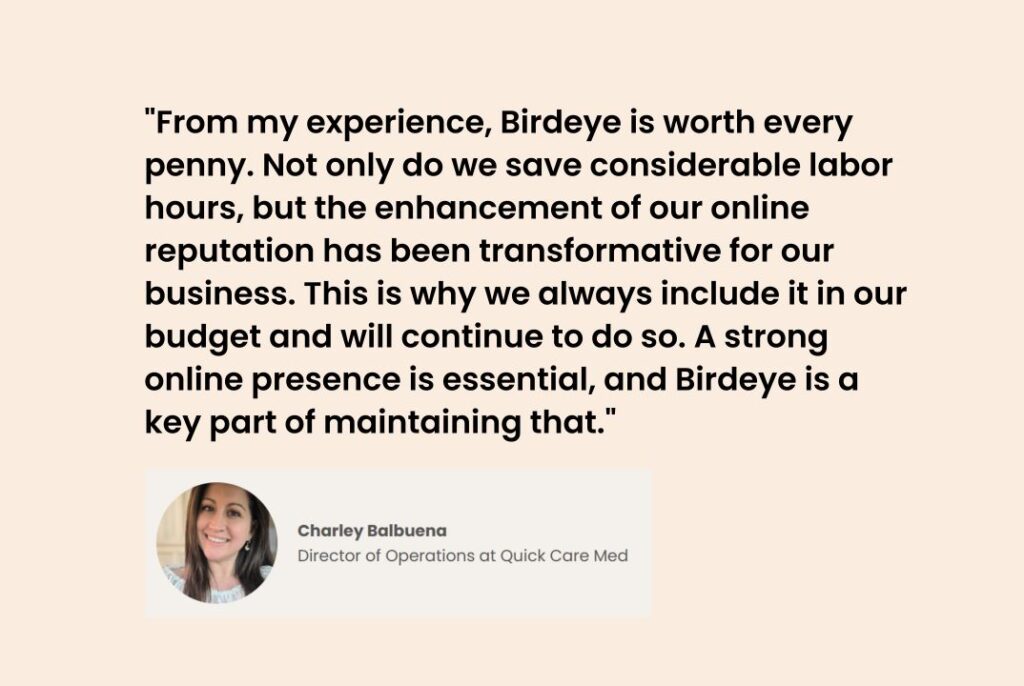
Learn more about Birdeye and Quick Care Med case study
Other local search engine optimization (SEO) mistakes to avoid
Here are some additional silent killers of local search engine optimization (SEO):
- ❌ Using multiple URLs for same content (confuses search engines)
- ❌ No structured data markup (schema helps Google understand your services)
How Birdeye fixes the gaps in your local SEO strategy
You can consider Birdeye as a full-stack platform designed to drive real, impactful local SEO results. Whether you’re looking to enhance local visibility, strengthen your reputation, optimize customer experiences, or gain insights into your competition, Birdeye offers the tools you need to succeed.
- Listings AI: Seamlessly manage and update your business information across Google, Apple, Facebook, Bing, and more. This ensures your business address is consistent and accurate, preventing issues like duplicate listings that can harm your local rankings and local community presence.
- Reviews AI: Automate the generation and response process for reviews, ensuring you maintain a strong online reputation with minimal effort. This boosts your local visibility and encourages engagement from many businesses in your area.
- Insights AI: Leverage GenAI insights from customer feedback, reviews, and surveys to fine-tune your strategy and stay ahead. These insights help you understand what drives customer satisfaction and how you can provide search engines with relevant, high-quality content to improve rankings.
- Competitors AI: Benchmark your performance against industry rivals and spot opportunities to outperform competitors by identifying gaps in your approach. Whether it’s enhancing your product, improving service quality, or refining your local strategy, Birdeye empowers you with the intelligence to lead in your market.

With Birdeye, you gain control over your local rankings and can strengthen your position across multiple channels. This ensures your business stands out in the local landscape and drives more customers to your door.
FAQs on local SEO mistakes
Some common local SEO mistakes include inconsistent business listings, ignoring reviews, using generic keywords, and failing to optimize for mobile and voice searches.
Mistakes like incorrect NAP or duplicate listings confuse search engines, reducing your local search ranking and making it harder for local customers to find you.
Solutions like Birdeye help to improve search visibility by automating business listing updates, managing reviews, tracking competitors, and providing insights to improve your local SEO strategy.
Yes, unless you manage multiple locations. Unverified or duplicate profiles can hurt your rankings and confuse potential customers.
Most local searches happen on mobile devices. A mobile-optimized site improves customer experience, search rankings, and conversion rates.
Final thoughts: Get proactive with your local SEO
You could be offering the best service in town, but if people can’t find you online, it won’t matter. Avoiding these local SEO mistakes is the first step to improving your visibility, earning trust, and attracting more local customers.
Use a complete solution like Birdeye to simplify and strengthen your SEO efforts. From Listings AI and Reviews AI to Chatbot AI and Insights AI, Birdeye helps you eliminate the guesswork and focus on what really matters: delivering a better customer experience and growing your business.
Don’t let simple local SEO mistakes sabotage your success. Avoid the pitfalls, take control of your online presence, improve local search visibility, and watch your local search results (and revenue) rise.
Ready to fix your SEO and grow faster? Watch a demo now.

Originally published
![[Feature image] Local SEO mistakes -what’s holding your business back from ranking locally](https://birdeye.com/blog/wp-content/uploads/Feature-image-Local-SEO-mistakes-whats-holding-your-business-back-from-ranking-locally-1140x596.jpg)

